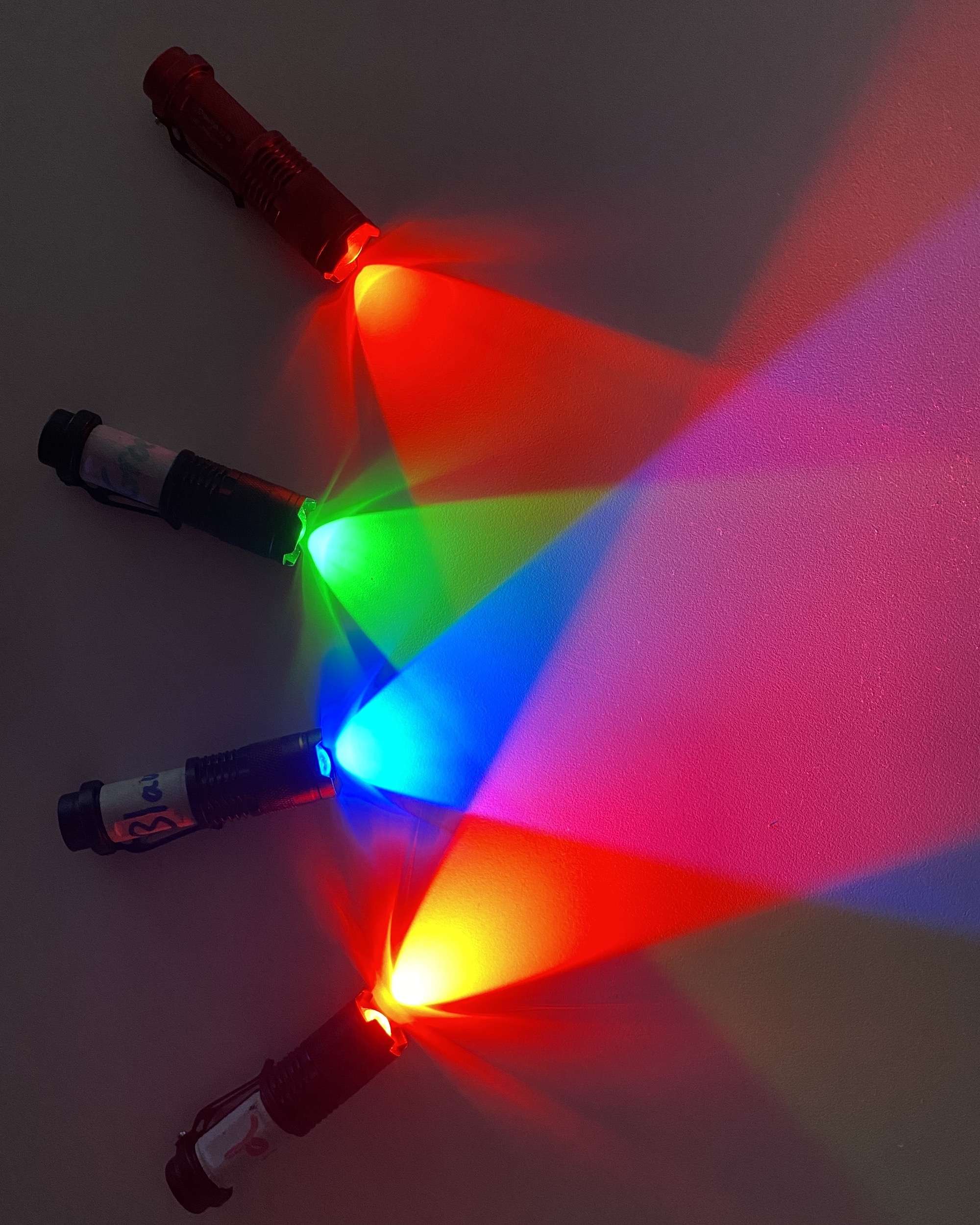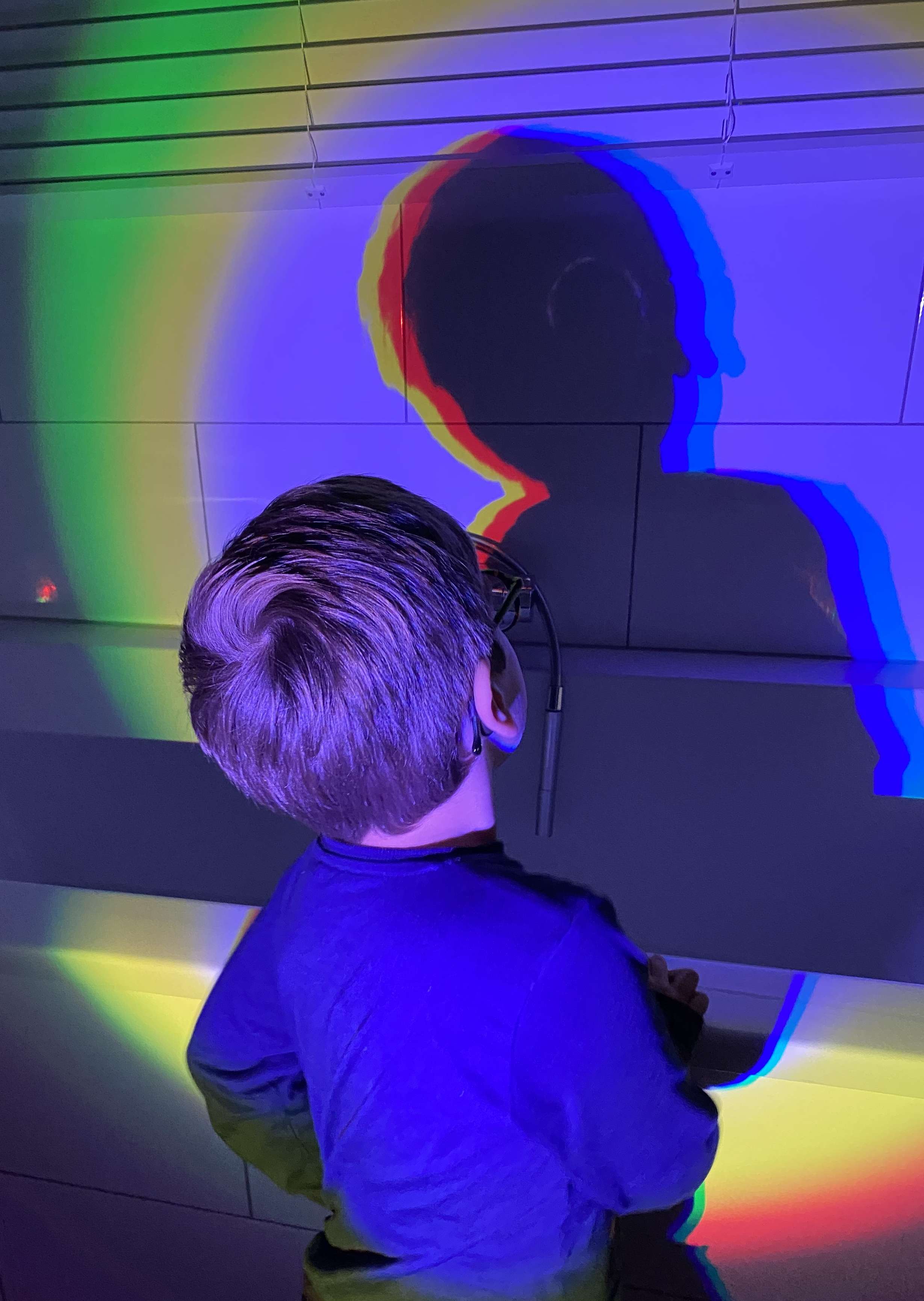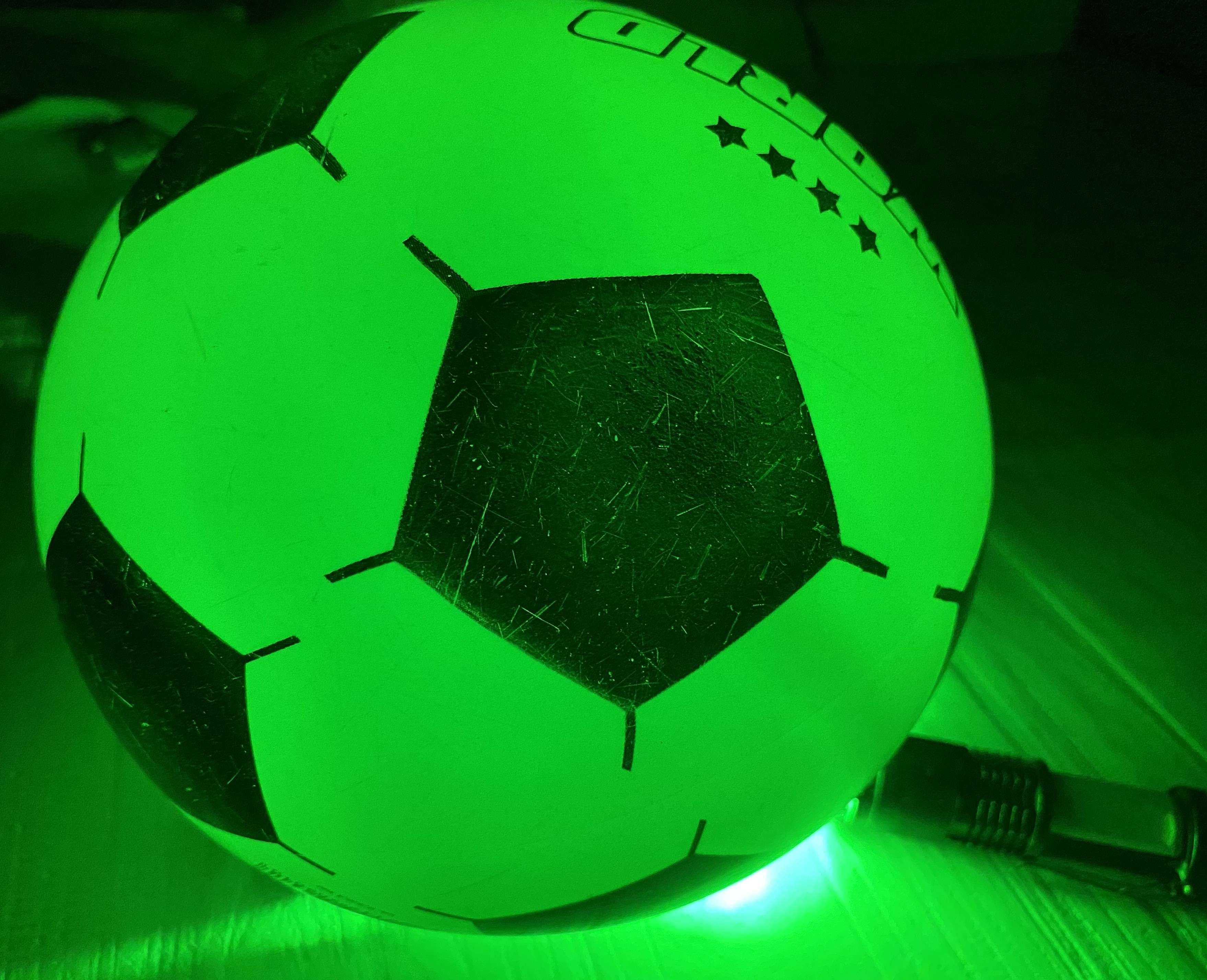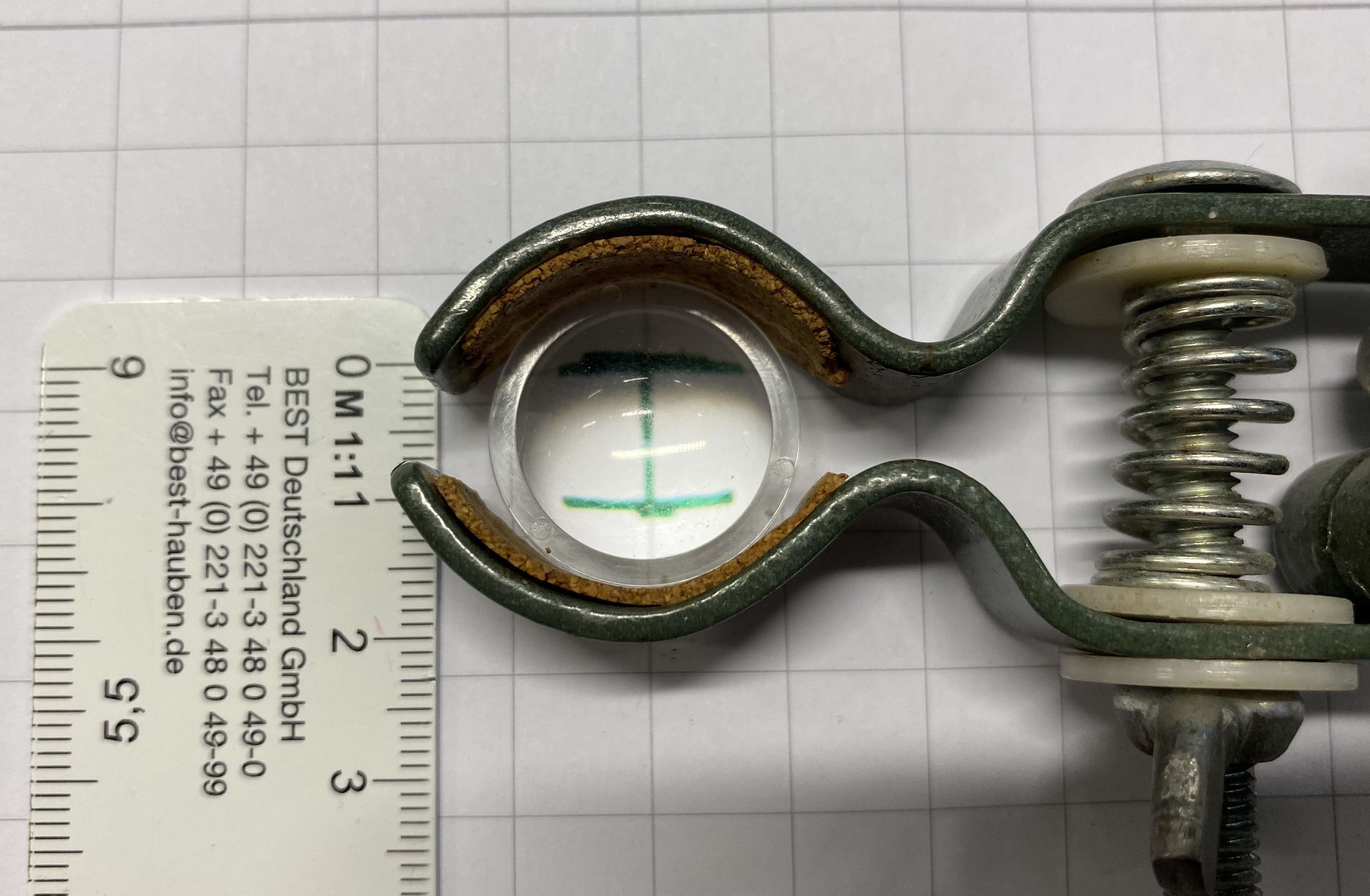20.8. Optics with LEDs#
LEDs Provide Fun and Insight
| Author: | Norbert van Veen |
| Time: | 10 to 15 minutes |
| Age group: | 14 - 18 |
| Concepts: | LEDs, Optics |

Fig. 20.19 The monochromatic LEDs used.#
Introduction#
Monochromatic LEDs are suitable for fun and educational demonstrations. They are also excellent for small student investigation. The bright colors in a darkened classroom create an atmosphere that students will surely remember.
Equipment#
Monochromatic LEDs in red, green, and blue are required for all the experiments. The following components are required per experiment:
Experiment |
Equipment |
|---|---|
Making spectrum |
spectrometer; measurement software. |
Overlap of light beams |
white screen |
Showing diffraction spectra |
LED TV or laptop screen |
Scattering of light |
inexpensive white plastic soccer ball |
Calculating the strength of the lamp’s lens |
holder for the lens |
Tip
The LEDs used were purchased from various online stores. Look for the light intensity that the LED lamps generate and choose the ones that emit a lot of light.
The inexpensive soccer ball can be replaced with ping pong balls.
Preparation#
Determine which demonstration you want to do and prepare these materials.
Start the software with the spectrometer connected.
Test if the classroom can be darkened enough. Let the beams overlap and see if they are clearly visible. Replace the batteries if necessary.
Stack the LED lamps on top of each other and simultaneously or individually aim at the TV or laptop screen and see if the diffraction spectrum is visible.
Place the LED lamp under the ball and ensure the ball cannot roll away.
Disassemble the LED lamp and remove the lens.
Procedure#

Fig. 20.20 Spectra of the monochromatic RGB LEDs determined with a spectrometer.#
Place the LED lamp at an appropriate distance from the spectrometer so that the spectrometer is not overexposed. Take a spectrum of the lamps. Identify the peaks of the wavelength and discuss with the students whether they think the lights are monochromatic or not. Optionally, compare the spectrum of the individual LEDs with a spectrum of a ‘white-light’LED. Are the spectra comparable?
Let the beams overlap and discuss the mixed colors of light. It is also fun to create a shadow with different colors, see Figure 20.21. Let students reason in what order you laid the LED lamps.

Fig. 20.21 Color Shadow: the LED lamps are placed next to each other, but in what order?#
Shine the red LED on a TV in a darkened room. Discuss the diffraction spectrum you see. Ask the students to predict how the spectrum of green and blue differs from the displayed spectrum (Figure 20.22).

Fig. 20.22 Diffraction spectra of three colors on the surface of a TV screen caused by the pixel pattern of the LED TV.#
Demonstrate the diffusion scattering on the white ball by placing it in front of the LED lamp. The ball will have the same color as the LED lamp (see Figure 20.23). You could even obtain a mixed color if you use two lamps. Try the experiment with a different colored ball (for example, a red ball). What happens to the color of the ball? Did you expect that color?

Fig. 20.23 Scattering on a ball.#
Determine the strength of the lens by magnifying, for example, a 1 cm square and then measuring the magnification and the distance from the lens to the paper. Use this to calculate the focal point of the lens (see Figure 20.24).

Fig. 20.24 Determination of the strength of a lens. The lens is placed in a holder. This holds the lens at a fixed distance from the paper. On the paper, a measurement of 0.5 cm is marked. When looking through the lens, it is now enlarged to 1.0 cm. The magnification here is therefore -2.0.#
Physics background#
The spectrum of the lamps is reasonably monochromatic.
The physics of mixed colors of light are well known.
The shortest wavelength has the smallest deflection. In Figure 20.22, it can be seen that the diffraction spectrum on the LED TV is a combination of a double and single slit.
The light from the LED lamp enters the white ball and is internally diffusely scattered. The entire ball will then emit the color of the lamp.
Figure 20.24 shows how the magnification is determined. In another situation, we found: \(N = -3.0\). Distance from the lens to the paper: \(v\) = 0.68 cm measured. For \(b\), we find: -2.0 cm. (\(b\) is virtual). Using the lens formula: \(f =\) 1.0 cm or \(S =\) 1.0·10\(^2\) dpt.
